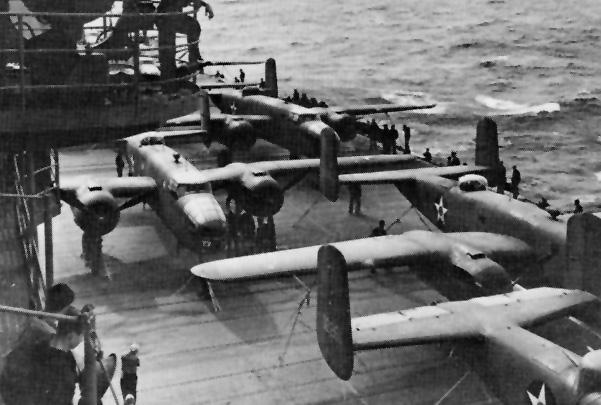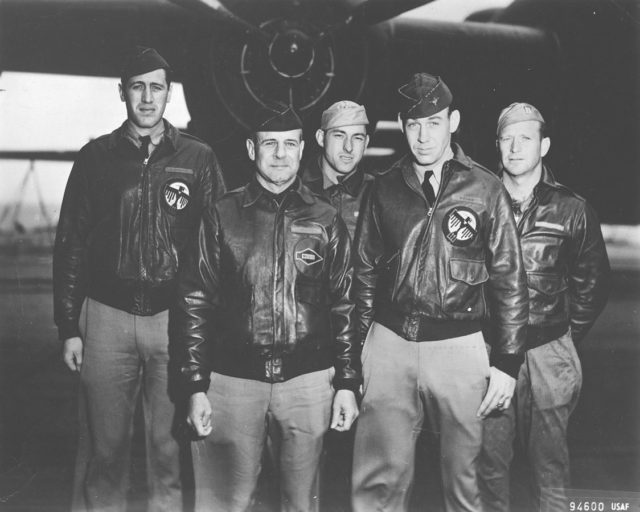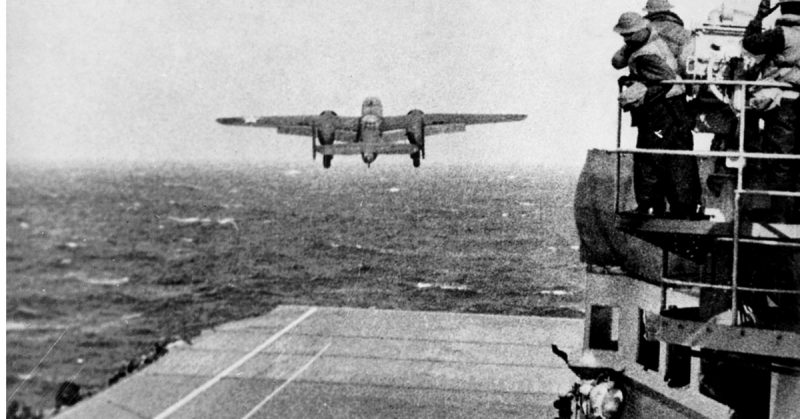On April 18th, the Doolittle Raiders were honored during a ceremony that commemorated the 74th anniversary of their Tokyo raid during World War II. The event took place at the Joint Base San Antonio Randolph, Texas (AFNS).
Lt. Col. James Doolittle led 80 pilots, gunners, navigators, and bombardiers on that same day in 1942. They flew sixteen B-25 Mitchell bombers toward Japanese islands in order to retaliate for the sneak attack at Pearl Harbor, Hawaii on that infamous December 7th, 1941.
General James Hecker is the 19th Air Force commander who stated, “It’s truly amazing what the 80 crewmembers did only four months after Pearl Harbor was attacked. They were able to take a B-25 that normally uses 3,000 feet to take off, and they did it in 500 feet aboard an aircraft carrier. They risked their lives so we can do what we are doing today.”

It was amazing to have retired Lt. Col. Dick Cole in attendance – he was a co-pilot in Doolittle’s bomber and one of only two Raiders surviving today. He still clearly recalls his time flying with the commander. Cole stated, “We were both there and we both knew what we needed to do. Him more than me, of course. I was just a brand new second lieutenant and at that time in the military, second lieutenants were to be seen and not heard; but we were all part of his team.”
Before the raid took place, the ships that were carrying B-25s were seen by a Japanese naval ship. This forced the Raiders to launch 200 miles earlier than planned. The problem was it that is led them to arrive over Japan during the height of the day with little to no cover. Amazingly, the Doolittle Raiders were able to carry out their mission and hit their targets. It was a surprise attack and they outran the interceptors.
Once the raid was over, fifteen of the sixteen B-25s made it safely to China. One lone bomber ended up landing in Russia. Sadly, three airmen were caught by the Japanese before being executed. One man died of disease in the filthy prison camp, another one died while parachuting from his aircraft, and another two Airmen drowned after failing to evacuate the aircraft in time.

Gary Boyd is the Air Education and Training Command historian. He feels the Doolittle Raid has been misunderstood over the course of many decades. There has undoubtedly not been enough credit allocated to those men who really changed the course of the Second World War. Boyd explained, “Originally, I think we were content with calling it a psychological victory.
In reality, it changed all of World War II in the Pacific because it proved to the Japanese how vulnerable they were to air attack; it changed their mindset and sense of self-protection. After the attack, they recalled aircraft back to Japan and they became obsessed with increasing the zone of protection for the home empire.”
Boyd felt the decision to pull resources back to protect the homeland was the direct cause of the United States succeeding at the Battle of Midway. It was a crucial and impressive victory at a time in the war when the United States badly needed a win of some kind. Therefore, at the end of the day, these men changed the entire dynamic of the war.
